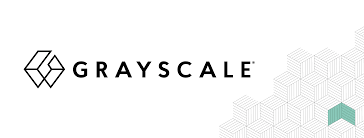What’s Next for Blockchain: Enterprise DeFi
The continued growth of the Decentralized Finance (DeFi) sector has made it an attractive venue for institutional players around the world. Many of them have started to accrue large sums of bitcoin and ether in response to fears of inflation and as a new way to yield tangible income.
A recent study has revealed just how massive this interest is. Specifically, a vast majority of the largest hedge fund executives believe that at least 7.2% of their holdings will be in cryptocurrencies by 2026. This would equate to roughly $312 billion across the industry. This mounting interest has led to the emergence of a new idea - enterprise DeFi. Enterprise DeFi is a concept that refers to major global institutions deploying Decentralized Finance (DeFi) technology to advance their services, products, and operations, as well as explore other opportunities.
Thanks to companies that create these technologies, institutional investors can seamlessly access new lending markets that operate on blockchain-powered financial infrastructure, something they couldn’t easily do in the past. This way, they can generate new income streams that are often much greater than what they would get using traditional means. On top of that, they can cut out the middle man from the process, along with any unnecessary fees and bureaucracy.
Let’s take a closer look at the notable platforms creating products that are successfully bringing these two different worlds closer together.
Aave Arc platform launch

In an effort to ease the corporate world into implementing this technology, the DeFi liquidity platform Aave has announced the launch of its Aave Arc protocol for institutional investors. The purpose of Aave Arc is to use private pools to provide institutional investors with direct access to decentralized markets they otherwise couldn’t access due to rigorous regulatory requirements.
The pools in question will be separate from the current liquidity pools on Aave and open only to participants who pass the know-your-customer (KYC) procedures. This refers to both the borrowing and lending sides.
DeFi lending and borrowing platforms such as Aave use smart contracts to allow users to lend, borrow, and earn interest on crypto assets without the interference of the middle-men. The majority of Aave’s operations run on the Ethereum blockchain, although the company has recently deployed successful integrations with the Polygon network. Aave is considered one of the largest companies of its kind as it secures nearly $27 billion in assets across its platform.
Grayscale’s upcoming DeFi fund

Grayscale provides market insight and investment exposure to digital assets via institutions’ brokerage accounts through its family of products. As of July 2021, Grayscale Investments had more than $28 billion in assets under its management. This is the company’s fifteenth investment product and its second diversified fund offering.
Circle’s new DeFi API

As the DeFi market flattens out, users can now farm for yield across different DeFi ecosystems. Aiming to provide businesses with access to leading DeFi protocols and allow them to easily transfer their digital assets across different ecosystems, some protocols are introducing the so-called bridges.
One of them is Circle, a company that specializes in creating technologies and infrastructure that bridge the gap between businesses and DeFi while ensuring ease of use and better access through the entire process.
With this goal in mind, Circle has introduced its new DeFi product that will allow businesses and institutions to manage, secure, and interact with direct network participants easily and without risk - something they couldn’t do before. On top of that, it will remove from the equation the high costs and regulatory complexities of running crypto finance infrastructure. By combining the USDC (USD Coin), Circle Accounts, its new Circle Yield offering, and this new DeFi product, Circle can now provide institutional investors with a full suite of cryptocurrency-native payments and treasury infrastructure.
Yieldly’s Algorand-Ethereum bridge

Another great example of connecting the two worlds is Yieldly and its Algorand-Ethereum bridge, which allows users to seamlessly exchange value between its underlying Algorand blockchain and Ethereum. The YLDY-ALGO pool allows users to gain upward of a 100% Annual Percentage Rate (APR) on their assets.
This is drastically different from traditional lending and borrowing, where this amount never exceeds 1%-5%. Furthermore, compounding returns via yield farming could facilitate locking in an APR that might range anywhere between 500% and 1000%.
Built on the Algorand blockchain, Yieldly has the mission to create the next-generation DeFi ecosystem. The company’s reasoning for using this particular blockchain includes faster trades, lower fees, and increased security - all of which is part of Yieldly’s mission.
Final words
As time goes by, it becomes increasingly clear that the DeFi sector is not only here to stay, but is set to change the investment landscape for good and for the better. Investors and entrepreneurs are aware of this and so are the folks working at DeFi platforms. This is why experts across the industry are working round the clock to bring the best possible solutions that would successfully and easily bridge the gaps and connect these two seemingly incompatible worlds.
What do you think awaits the concept of enterprise DeFi in the future? Do you have any questions, comments, or maybe you’ve noticed something we missed? We’d love to hear from you so make sure to tell us in a comment! We also welcome you to pay a visit to our blog or listen to our informative and entertaining Blockchain Innovators podcast. There you can learn more about the revolutionary world of blockchain and its constant innovations.
